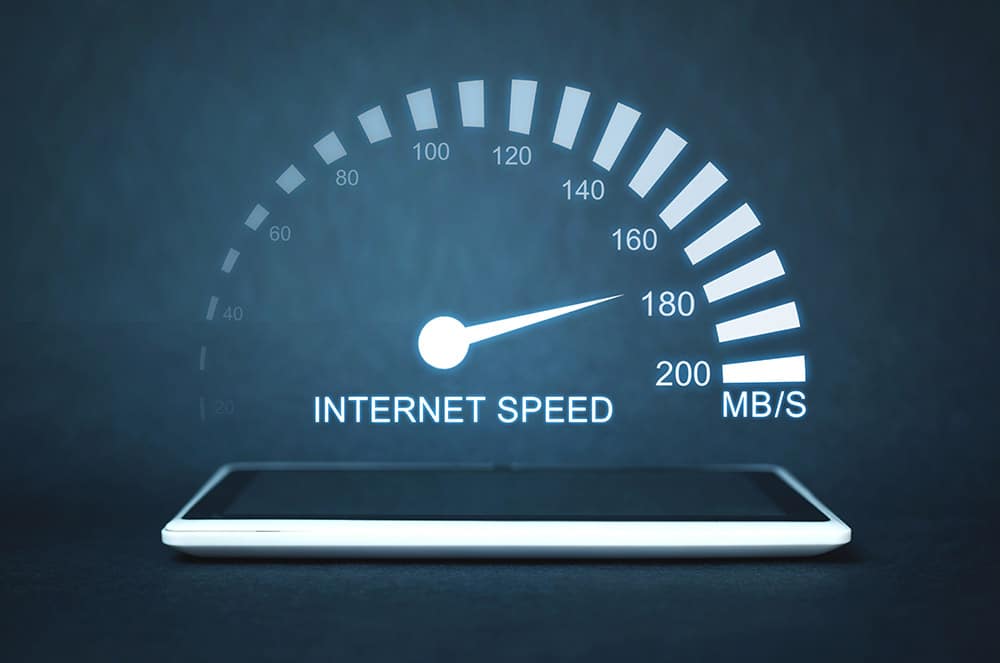260
There is no general answer to the question of how fast LTE is. We have summarized everything you need to know about this in this practical tip.
LTE speed: Basics and theoretical maximum values vs. real average values
The abbreviation “LTE” stands for “Long Term Evolution.” It is a mobile communications standard that is commonly considered to be part of the fourth generation of mobile communications and is therefore often referred to as 4G.
- However, not all LTE is the same: the maximum possible bandwidth of the standard can vary significantly depending on the provider, tariff, device, and network coverage.
- The bandwidth you can use depends on your tariff and its speed specifications, the network coverage and frequency situation in your region, and also on the smartphone or device you use.
- When it comes to music streaming, you will often notice little difference between different bandwidths in practice. With video streaming, on the other hand, differences are particularly noticeable at lower speeds: downloading a 20 MB video at an LTE speed of around 21.6 Mbit/s takes about seven seconds – at 50 Mbit/s, it takes only about three seconds. If the speed is higher than that, it often makes little difference in everyday life how fast LTE is in detail.
- Theoretical maximum values: In the ideal case—i.e., with optimal network, device, and tariff equipment—LTE enables significantly higher speeds than the typical everyday values. Some providers, for example, specify download speeds of up to 300 Mbit/s. In special cases (carrier aggregation, 4×4 MIMO, etc.), speeds of up to 400–500 Mbit/s or more are theoretically possible. There are also terminal categories such as Cat 12 (up to approx. 600 Mbit/s) or higher.
- Real average values in Germany: In practice, however, the achievable speeds are significantly lower. The OpenSignal report found an average download speed of approximately 51.8 Mbit/s on the German mobile network for Deutsche Telekom AG, approximately 47.3 Mbit/s for Vodafone GmbH & Co. Co. KG, and approximately 36.5 Mbit/s for Telefónica Deutschland GmbH (O₂ network). According to provider information from spring 2025, Telekom’s “LTE Max” network offers speeds of up to 300 Mbit/s, with an average download speed of 85.5 Mbit/s and an average upload speed of 35.4 Mbit/s, according to a summary.
- Realistically, in everyday use, many users experience speeds of between 20 and 100 Mbit/s, depending on the region and network.
Factors influencing speed and LTE categories
Various factors influence the actual LTE speed you can achieve:
- Network coverage and network expansion: The denser the network and the shorter the distance to the radio cell, the better the conditions. You can check these online with most providers.
- Frequency range and number of aggregated carriers (carrier aggregation): The more frequencies are combined (e.g., 2CA, 3CA…), the higher the potential.
- Radio cell utilization: Many users at the same time → shared resources → lower speed.
- Device used and its LTE category: An older or cheaper device may only support Cat 4 instead of Cat 12 or higher – thus limiting the speed.
- Tariff restrictions: Some tariffs limit the maximum speed (e.g., 21.6 Mbit/s at discount providers).
- Structural obstacles or environment: Thick walls, basement location, distance from the outdoor antenna or radio mast interfere with the signal.
- Signal quality (e.g., due to weather, terrain, radio blockages): Reflections, buildings, vegetation, etc. also have an effect here.
- The end device modem is also crucial: There are various LTE “category” designations, e.g., Cat 4, Cat 6, Cat 12, etc., which define the maximum data rate supported by the device. Examples:
- Cat 4: up to approx. 150 Mbit/s downlink, ~50 Mbit/s uplink.
- Cat 6: up to approx. 300 Mbit/s downlink.
- Cat 12: up to approx. 600 Mbit/s downlink, if the network and tariff allow. This means that even if your provider specifies “up to 300 Mbit/s,” for example, but your device only supports Cat 4, the maximum speed will be ~150 Mbit/s.

